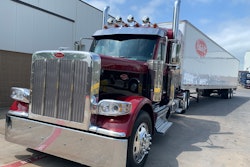A carrier was able to exonerate one of its drivers in an accident that occurred just two weeks after that truck received a video monitoring system installation. A driver-facing dash camera showed that the driver was not distracted or tired; the telematics systems proved the driver wasn’t speeding; and the ELD verified the driver was within their hours of service limits. A forward-facing dash camera showed that the passenger vehicle involved had cut the driver off and hit the front of the truck.
This was an illustration in a recent report Effective Strategies to Improve Safety by the National Surface Transportation Safety Center for Excellence that involved nine carrier case studies. The study shows carriers that implemented video monitoring saw a 53% to 66% reduction in accidents. In the study, eight of the nine carriers used technology – like dash cameras and automatic emergency braking and lane-departure systems – to improve safety.
A recent webinar hosted by GPS Insight highlighted this study and determined five can’t-skip ingredients for an effective fleet safety recipe. Technology is No. 4 on the list, followed by training. The top ingredient is buy-in, followed by consistency and being proactive.
“There are just so many fleets – not just in the United States but across the world – that are always looking for ways to improve safety,” said Matthew Camden, senior researcher with the Virginia Technology Transportation Institute. “But a lot of times we hear that fleets don't necessarily know where to turn and what they should try.”
The study identified strategies among the nine fleets that were successful – and some even unsuccessful – in reducing crashes and improving safety performance. Camden said some faced barriers from coming up with a plan and obtaining equipment to understanding what problems needed solving and how to evaluate that.
While the implementation of safety measures is going to depend on a per-feet basis, Rick Harland, assistant director of fleet mobility services for the city of Austin, Texas and former fleet manager at Time Warner, offered several strategies: develop data-driven policies; implement a safety culture from leadership down; use auditable technology; and set key performance indicators to establish a method for continuous improvement.
Here's what the experts had to say per ingredient:










